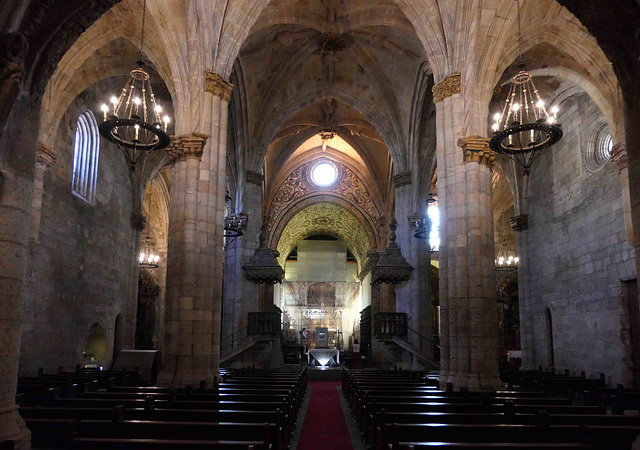Sagrada Familia
Lamego - Capela de São Pedro de Balsemão
Im Dom
Im Dom
Im Dom
Saint-Nicolas-du-Chardonnet - Grand orgue
Battistero San Giovanni
Bragança - San Bento
Bragança - São Vicente
IMG 0790-001-Cosmic House 18
Bragança - Sé Velha de Bragança
DE - Wachtberg - St. Georg in Fritzdorf
Amarante - Igreja e Convento de São Gonçalo
Igreja de Santo André de Telões
Svyat Uspenskyi Orthodox Cathedral
Mosteiro de Leça do Balio
DE - Trier - Grab des Apostels Matthias
Bande - Santa Comba
Bande - Santa Comba
Church of Saint Francis Xavier.
L'église Sainte Vierge Marie de Saint-Genou
Ourense - Santa Eufemia
Ourense - Catedral de Ourense
Im Dom
Im Dom
DE - Kevelaer - Kerzenkapelle
Coimbra - Mosteiro de Santa Clara-a-Nova
Chapelle Le Brun (XVIIè)
Intérieur de la cathédrale Saint Pierre de Rennes…
Köln - Im Gewölbe des Kölner Doms
Köln - Im Gewölbe des Kölner Doms
DE - Kevelaer - Marienbasilika
Batalha - Mosteiro da Batalha
DE - Kevelaer - Altar der Gnadenkapelle
Nederland - Denekamp, Sint-Nicolaaskerk
Collégiale du PUY NOTRE DAME Maine et Loire
Collégiale du PUY NOTRE DAME Maine et Loire
Alcobaça - Mosteiro de Alcobaça
Altar St. Nikolai-Harvestehude
Sagrario de la iglesia de la Asunción (Priego de C…
DE - Kevelaer - Johanneskapelle
DE - Kevelaer - Marienbasilika
Alcobaça - Mosteiro de Alcobaça
Im Dom von Florenz
DE - Kevelaer - Altar der Kerzenkapelle
Location
Lat, Lng:
You can copy the above to your favourite mapping app.
Address: unknown
You can copy the above to your favourite mapping app.
Address: unknown
See also...
Keywords
Authorizations, license
-
Visible by: Everyone -
All rights reserved
-
112 visits
Viseu - Sé de Viseu


Chief Viriathus ("Viriato") successfully led the Lusitanians here in their resistance against the advancing Romans in the second century BC, until the latter were able to kill Viriathus and also conquer this area. Various milestones of Roman roads crossing here have been preserved. After the invasion of the Suebi and Visigoths in the 6th century AD, Viseu became a bishop's see.
From the beginning of the 8th century, the region was ruled by Moors. During the Reconquista, Viseu also remained contested. In 1027, King Alfonso V of León fell during the siege of Viseu. Ferdinand I of León was finally able to conquer the region from the Arabs in 1057.
During the revolution of 1383, Viseu suffered some destruction, whereupon King D. João I had the town re-fortified.
Archaeological research has shown that there was an early Christian basilica on the site of Viseu Cathedral, which was built during the time of Suevian rule (5th-6th century), as Pope John III had already established a bishopric here in 572.
After the reconquista, a first church was built from 1094 to 1114 on the site of today's cathedral. The new cathedral was built between 1289 and 1313 under King Dinis I, and the first cloister was added in 1379. The main portal of the cathedral was built in 1513. In the 16th century, the cloister was also extended and the sacristy was built. In the 17th century, the north tower of the façade was rebuilt in its old form following a collapse. Since then, the exterior of the church has remained largely unchanged, although it has been regularly renovated.
The cathedral is a mixture of different architectural styles. From Romanesque to Manueline. While the columns are Gothic and date from an early construction phase, the ribbed vaults above the side aisles are from around 1500
From the beginning of the 8th century, the region was ruled by Moors. During the Reconquista, Viseu also remained contested. In 1027, King Alfonso V of León fell during the siege of Viseu. Ferdinand I of León was finally able to conquer the region from the Arabs in 1057.
During the revolution of 1383, Viseu suffered some destruction, whereupon King D. João I had the town re-fortified.
Archaeological research has shown that there was an early Christian basilica on the site of Viseu Cathedral, which was built during the time of Suevian rule (5th-6th century), as Pope John III had already established a bishopric here in 572.
After the reconquista, a first church was built from 1094 to 1114 on the site of today's cathedral. The new cathedral was built between 1289 and 1313 under King Dinis I, and the first cloister was added in 1379. The main portal of the cathedral was built in 1513. In the 16th century, the cloister was also extended and the sacristy was built. In the 17th century, the north tower of the façade was rebuilt in its old form following a collapse. Since then, the exterior of the church has remained largely unchanged, although it has been regularly renovated.
The cathedral is a mixture of different architectural styles. From Romanesque to Manueline. While the columns are Gothic and date from an early construction phase, the ribbed vaults above the side aisles are from around 1500
homaris, Marco F. Delminho, Don Sutherland, Paolo Tanino and 3 other people have particularly liked this photo
- Keyboard shortcuts:
Jump to top
RSS feed- Latest comments - Subscribe to the comment feeds of this photo
- ipernity © 2007-2025
- Help & Contact
|
Club news
|
About ipernity
|
History |
ipernity Club & Prices |
Guide of good conduct
Donate | Group guidelines | Privacy policy | Terms of use | Statutes | In memoria -
Facebook
X

Sign-in to write a comment.